Patreon MUSICARTA Premium
Practicing Scale Fingering
~ Contrary Motion ~
In 'contrary motion' scales, the hands move in opposite (contrary) directions - as opposed to the 'similar motion' (same direction) scales we have been playing so far.
Contrary motion scales are slightly more challenging, because the black keys ('accidentals') come at different times in the two hands.
This page/video demonstrates the C major one-octave contrary motion scale, and offers a selection of scale practice patterns which will help you learn all the contrary motion major scales.
C and the sharp keys to E major are comparatively easy because the fingering is symmetrical - the thumb goes under and finger three comes over under at the same time.
This page introduces a number of contrary motion scale fingering practice patterns (SFPPs). This page is the first of five covering one-octave contrary motion scales in all the keys.
|
x5/x8 SPPs (ConMo) nav |
Build-up to the contrary motion major scale
We can use 'x5/x8' patterns to learn the contrary motion major scale, and for variety as we practice in different keys.
Here's an introductory video which takes us as far as the basic x5x8 pattern.
You play from thumbs on middle C out, passing both thumbs under finger 3 at the same time, out as far as finger 2 before coming back in.
Rehearse that three times, then play all the way out to the octave (finger 5).
Then play that whole octave going outwards a few times.
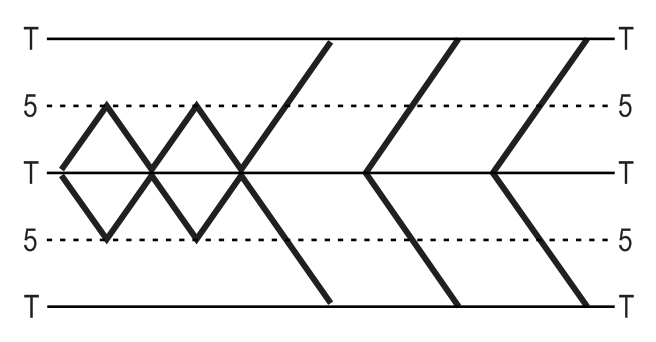
Coming in from the 'outside', both hand start on finger 5 and 'run out' of fingers at the thumb, so you bring three over in both hands, and that gets you back to the tonic.
Play that straight off a few times.
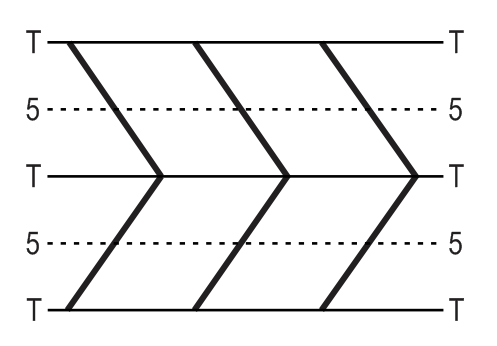
Alternate the 'from the inside out' and 'from the outside in' scales a few times.
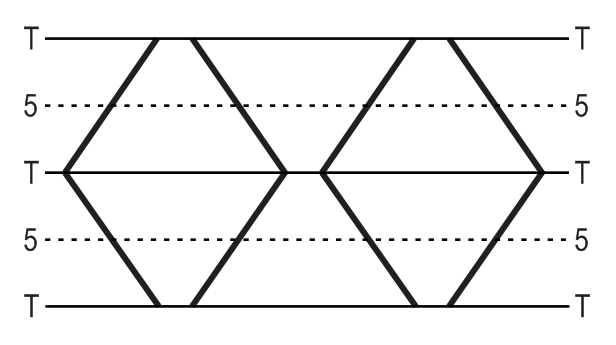
The animated contour diagram shows you clearly what's next! Practice until you can play this x5/x8 pattern up to speed (or nearly!).
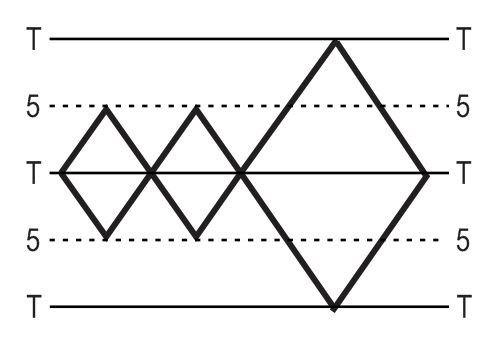
More patterns
Play the one-octave contrary motion scales from the inside and from the outside. Maintain a sense of rhythm over the change. Listen carefully, and come in crisp and clean at exactly the right time and speed.
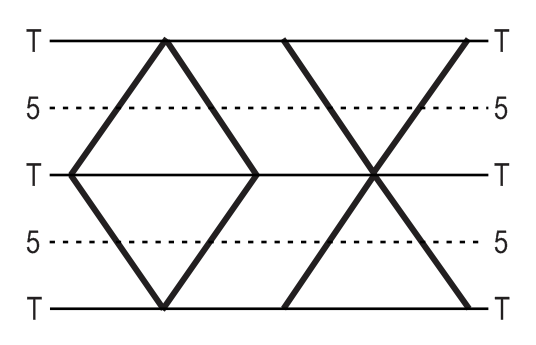
Switching into stressed-in-threes, try this pattern.
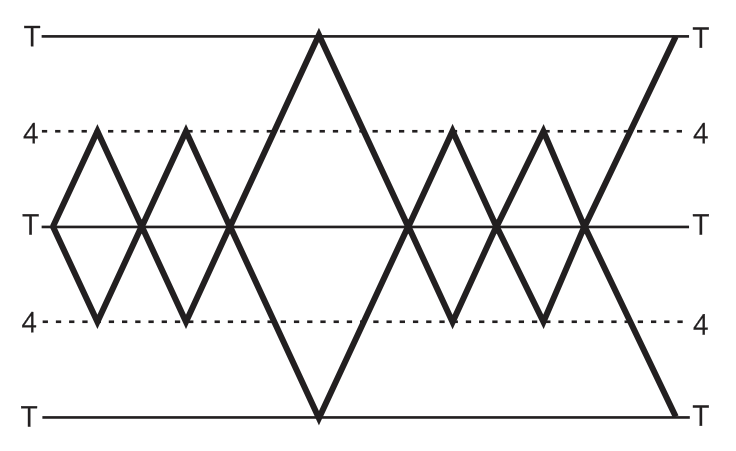
This pattern goes out only as far as the thumb-under. Let your wrists swing laterally to make passing the thumb under easier.
Note: Only goes from the middle - no 'from the outside' version.
The grouping in threes throws the stress onto these fingers - in both hands at the same time.
1 - 1 - 1 - 1 - 1 - 1 - 4 - 3 - 3 - 2 - 3 - 2 - 3 - 2 - 2 - 5
Try reciting these as you play! Is there a singer-songwriter in you?
Stressing scales in threes means that a pattern will finish naturally after three octaves (length). This means if you start in the middle, you end at the outside tonics, and vice versa.
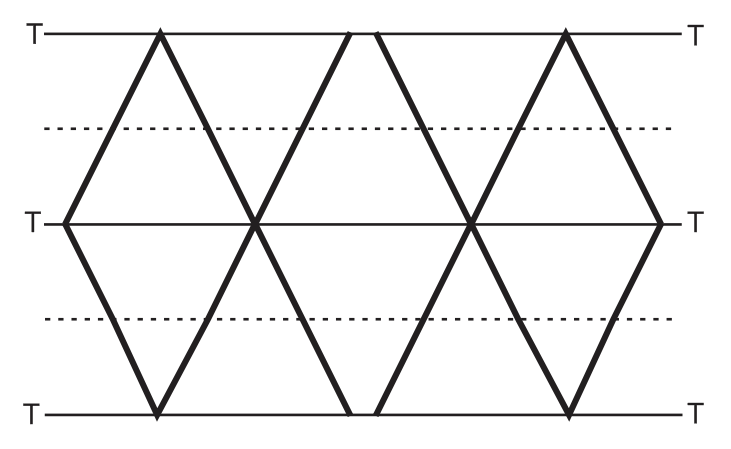
This moves the stress between the fingers.
From the inside:
1 - 1 - 4 - 3 - 3 - 2 - 2 - 5
From the outside:
5 - 2 - 2 - 3 - 3 - 4 - 1 - 1
Take this as an opportunity to even up your fingers - one of the prime benefits of playing scales.
The three notes in the groups-of-three don't have to be all the same length, but making one of the notes longer puts you back in an even four/two count.
Watch the video first and you'll see what is meant.
The pattern works only from the middle, but the hands swap rhythms.
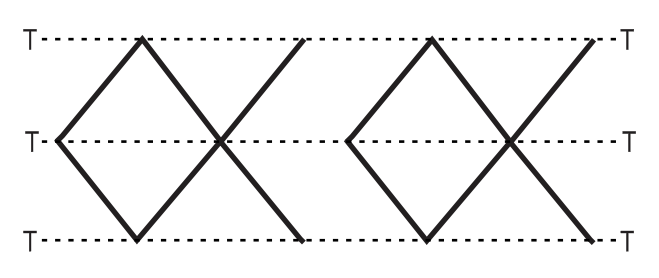
The final pattern is a real challenge - the right and left hands cover a different number of octaves (length)!
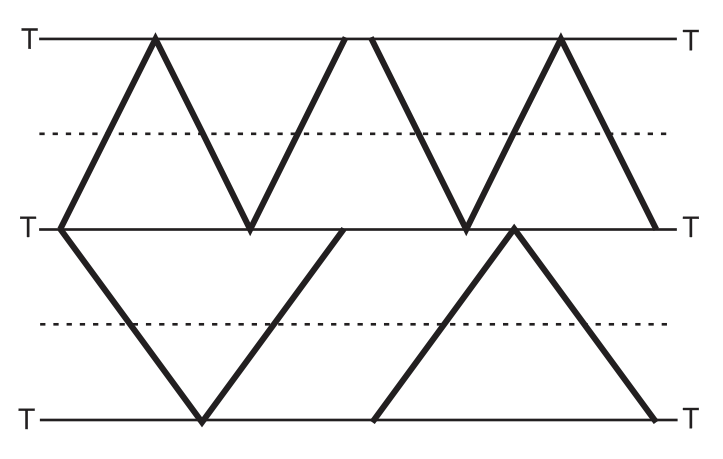 |
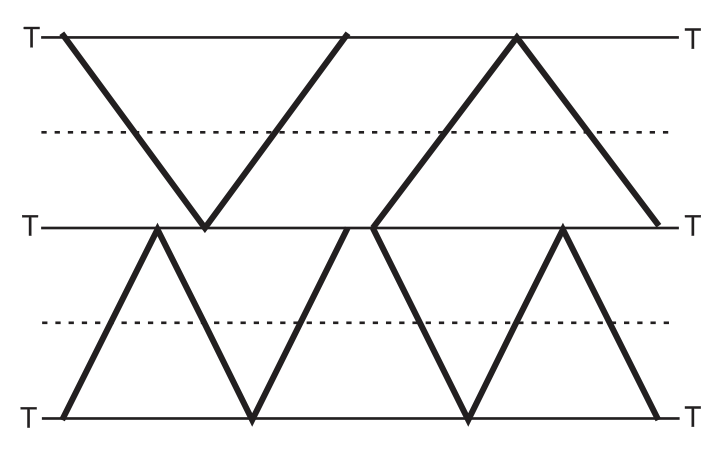 |
This will test whether you can stick to your Scale Fingering Group 1 and 2 fingering under fire!
Going forward...
This is the first of five pages covering the major one-octave contrary motion (ConMo) scales in all keys - this demonstration page and a selection of patterns in the four two-hand scale fingering groups (2H/SFGs).
Go on to transfer your C major contrary motion skills to the sharp keys next. For your learning convenience, you will find the series nav (below) on all the pages.
|
x5/x8 SPPs (ConMo) nav |
|
Musicarta Patreon
SCALES SERIES
Reference
Scale fingering
Scale Practice Patterns (SPPs)
Scale-tone practice patterns (STPPs)
Chromatic Scales
Diminished Scales
|
The MusicartaA methodical approach to keyboard syncopation for
|
PUBLICATIONS
exciting keyboard
creativity courses
CHORDS 101
WORKBOOK

~HANON~
video course

Musicarta
Patreon
PENTATONICS
WORKBOOK
video course

Creative Keyboard
video course

BEAT AND RHYTHM
WORKBOOK

- Volume 1 -

12-BAR PIANO
STYLES WORKBOOK

MUSICARTA MODES
WORKBOOK

PIANO STYLE

CANON PROJECT
video course

VARIATIONS
video course


- Piano Solo -
video course

- Piano Solo -


YouTube playlists


